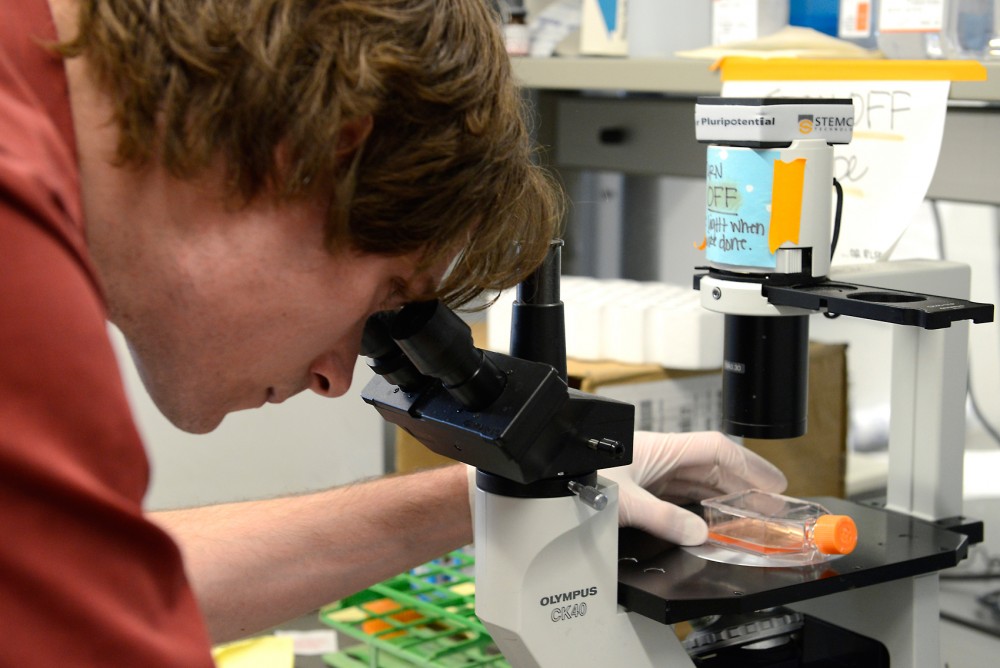Recently awarded funding for University research could help some people eventually receive treatment for chronic spinal cord injuries.
The Minnesota State Legislature gave several grants to University of Minnesota researchers for their work to help people with traumatic brain and spinal cord injuries.
University neurosurgery professor Ann Parr will work on three separate projects, including one that will use epidural paddles to stimulate spinal cord nerves. All of the projects received state funding in the last month.
In this most recent wave of state funding, the University received $375,000 for chronic injury research projects.
There were six project proposals for spinal cord injury research and 11 for traumatic brain injury research, said Office of Higher Education Program Manager Nancy Walters.
Of those, 10 were affiliated with the University.
But each project is a collaboration of different scientists, researchers, medical equipment developers and doctors, Parr said.
“Modern research, you can’t do by yourself,” she said. “You can’t just have your own tiny, little lab and not collaborate with anyone else. Science doesn’t work that way any longer. You have to work with larger groups of people for a diversity of strengths.”
James Dutton, a researcher at the University’s Stem Cell Institute, will work with Parr on her project that will implant a special type of adult human stem cell into a rat with a chronic spinal cord injury.
Dutton said he and others are researching ways to make the cells more quickly and effectively so they can use them for human trials in the future.
“The fact that the state has come up with this money is very good for us,” Dutton said. “It shows that the state has started to understand that we need sources of funding.”
Parr said similar research projects are underway in other parts of the world, but there is still no treatment or “cure” for spinal cord injuries and traumatic brain injuries.
Parr said this round of funding might allow researchers to pick three people for an epidural stimulation trial out of the thousands currently on the treatment waitlist.
State funding is usually focused on “huge population” issues like cancer and diabetes, said Get Up Stand Up To Cure Paralysis Executive Director Matthew Rodreick. Spinal cord injury and traumatic brain injury research is just starting to catch up, he said
Rodreick has fought for public funding for spinal cord injury research for almost a decade, and he said the source of his inspiration is his son Gabe, who suffered a spinal cord injury when he was 15.
“I’m extraordinarily proud of what my son has accomplished,” he said.
State Rep. Nick Zerwas, R-Elk River, said the Legislature started looking into a grant for research that is specific to chronic injuries a few years ago.
“If we invest in research here in Minnesota and really draw in the best folks to come and conduct their research here, it becomes a natural step for researchers to partner with industry and put those ideas in to action and really impact people’s lives,” Zerwas said.


